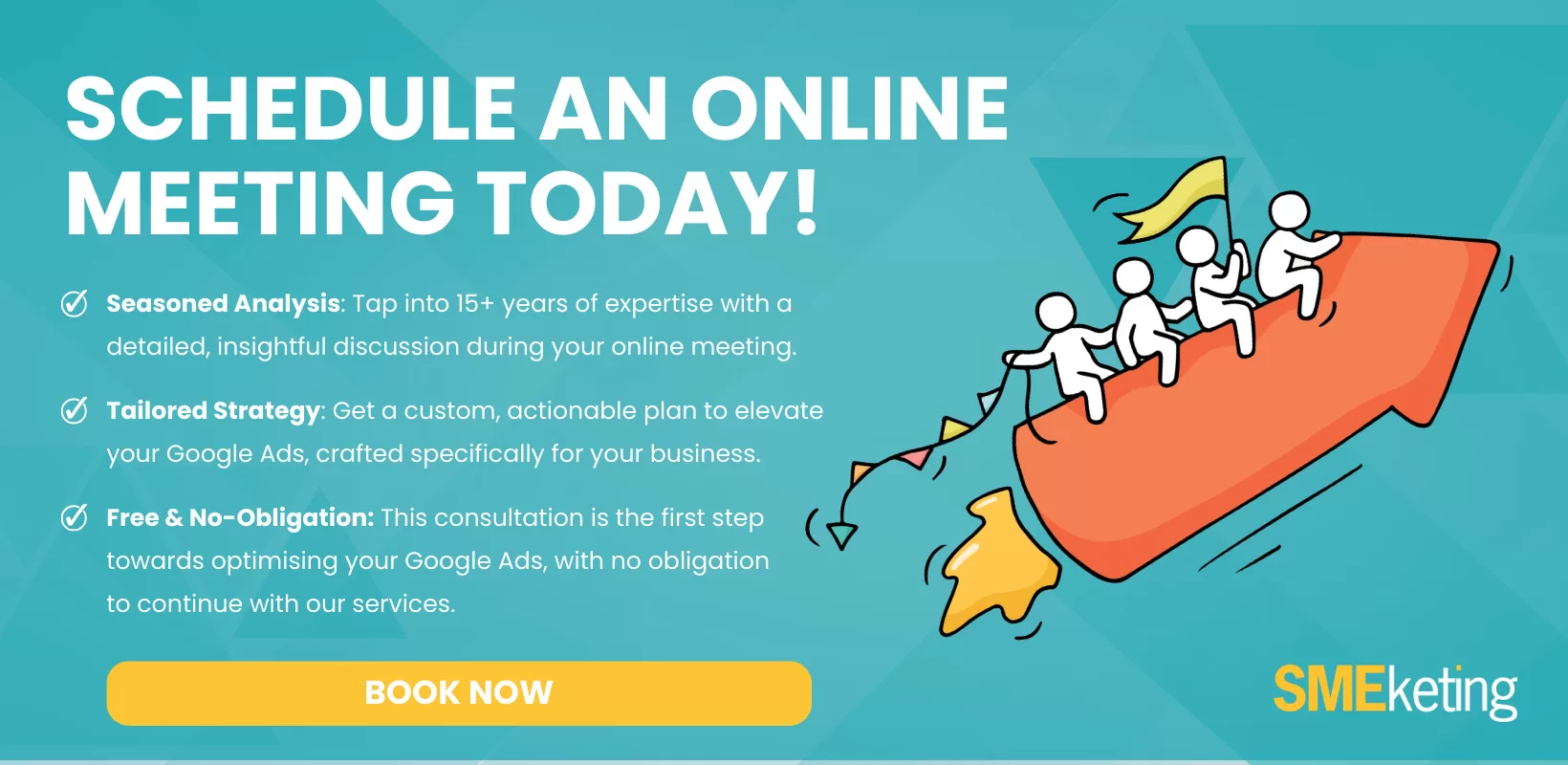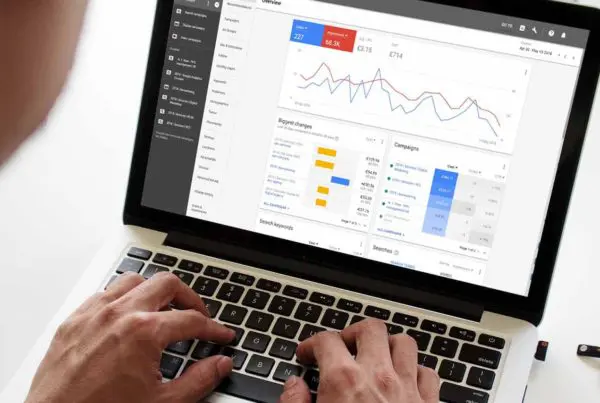Google Ads are an excellent way of driving targeted traffic to your website. But it can be expensive if not handled correctly. The key is to make sure you effectively manage your campaigns to make sure you get a high return on your investment. However, I see a lot of people making Google Ad mistakes that can be easily avoided. A poorly managed campaign cost more than it brings in, however, a well-managed campaign can help boost sales and keep your organisation in business.
I thought I’d list some of the common mistakes I see on a regular basis. By avoiding these you should ensure you’re on your way to a successful campaign!
Most common Google Ad Mistakes:
1: Not grouping keywords in targeted Ad Groups
Google Ads is designed so you can create various different, tightly focused campaigns and ad groups. You should make sure you’re not lumping all your keywords in one ad group, and instead focus on segmenting these into many, targeted groups instead. This way you can make sure you’re showing a relevant advert to the keyword being searched. The closer the ad copy matches the keyword, the more likely people are to click on it.
So try not to have more than 20 keywords per group, and make sure these 20 are all related to each other. If you have a lot of keywords that aren’t getting regular impressions, then delete these. Google likes nice neat, tidy ad groups!
2: Not using the right keyword matching
There are four main keyword matching options open to advertisers – broad, broad match modifier, phrase, and exact.
Here’s how Google explains the four types:
| Match type | Special symbol | Example keyword | Ads may show on searches that contain: | Example searches |
|---|---|---|---|---|
| Broad match | none | women’s hats | Misspellings, synonyms, related searches and other relevant variations. | buy ladies hatswomen’s clothing |
| Broad match modifier | +keyword | +women’s +hats | All the terms designated with a + sign (or close variations of those terms) in any order. Additional words may appear before, after or between the terms. | women’s scarves and hatswinter hats for women |
| Phrase match | “keyword” | “women’s hats” | Matches of the phrase (or close variations of the phrase) with additional words before or after. | blue women’s hatsbuy women’s hatswomen’s hats on sale |
| Exact match | [keyword] | [women’s hats] | Exact matches of the term or close variations of that exact term with the same meaning. | women’s hatsladies hatshats for womenhats women |
You can learn more about this on the Google help page here
So why is this important? Well, the match you serve can have a huge impact on your ads and clicks. A broad match will result in an awful lot more ad impressions because it casts the net so much wider. This means you may get a lot of clicks that just aren’t relevant. So lots of website visits, but perhaps not a lot of sales.
So you need to balance up your goals – lots of traffic, or less traffic but higher quality visits.
A good approach is to start with phrase match and then expand to broad and/or broad match modifier or filter down to exact match as needed.
3: Not using negative keywords
Google Ads allows you to add keywords that you do not want your ads to show for. This is a great way to filter out irrelevant traffic that result in low-quality clicks.
For example, if you own a shop that sells women’s clothes and shoes, but not sportswear, you wouldn’t want your ad to be shown for keywords such as ‘running shoes for womens’, so you can add the term ‘running’ as a negative word, so any searches that include ‘running’.
If you go to your Google Ads keyword report and click on ‘Search Terms’ you’ll see the exact keywords people have typed into Google that has prompted your ad to show and for them to click.

This is very helpful in identifying keywords that you think are irrelevant and can be added to your negative keyword list.
4: Not testing your ad copy
You might think you’ve written the perfect ad, but if it’s not resonating with searchers then it may be necessary to get back to that drawing board.
It’s important that all ad groups have about three ads each, so you can see which ones get the highest click-throughs, highest conversion rates, and highest levels of engagement.
So what should you be testing? Well, think about the headline, the message, the call to action, and display URL. It might be that listing one particular benefit gets a higher click-through, or using a different call to action gets more response.
You don’t really know until you try and test. And never stop testing!
5: Expecting too much from Google Ads
Google Ads is great – it can give you a stream of highly targeted traffic. But a lot of people have a really small budget and expect to grow their business using Ads overnight.
A lot of keywords can be very expensive to bid on, and a small budget can often get spent very, very quickly. If you’re not sure what you’re doing you can find that you’re spending all your money and not getting a return on investment.
Not getting a lot of clicks because you’ve run out of budget can make it difficult to trial and test campaigns, making it hard to improve them and get the best ROI.
So use the largest budget you can afford. You need to try and drive a significant amount of traffic to your site so you can have the time and opportunity to tweak and optimise your campaigns.
It’s also important to note that Ads sends traffic to your site – that’s it. You need to make sure you’ve got a website that converts. If your site is poorly made, complex, or confusing, people will leave straight away.
So make sure your site performs as well as possible before launching your Ads campaigns.
- How to Do Keyword Research for Google Ads - January 15, 2024
- A Comprehensive Guide to Google Ads for B2C Businesses - January 8, 2024
- How to Write Calls to Action (CTAs) for Google Ads - December 25, 2023







